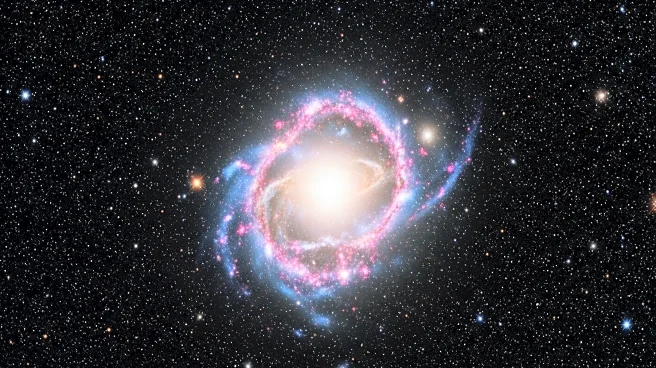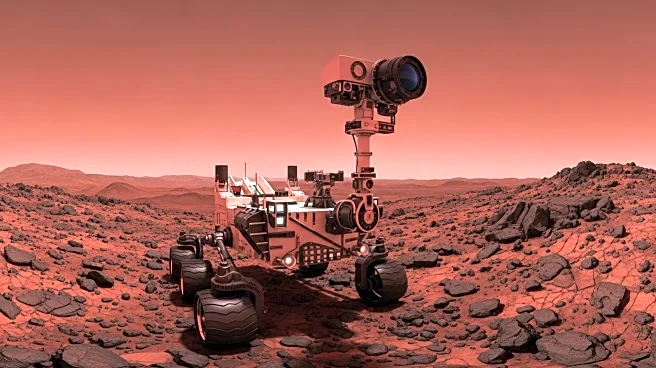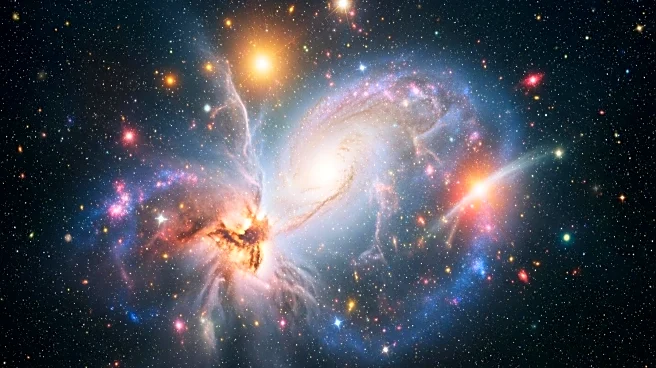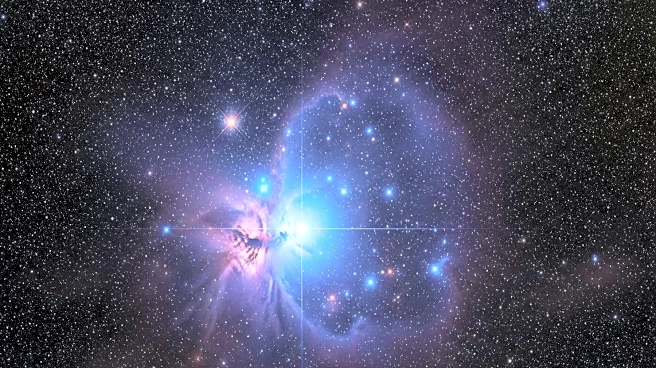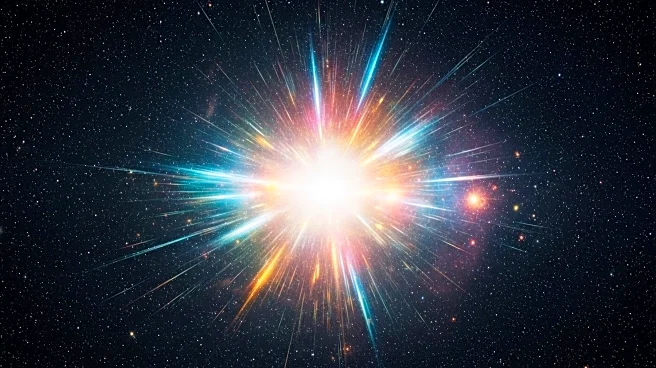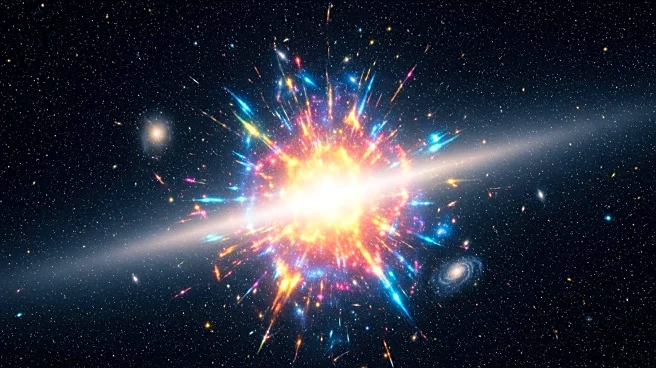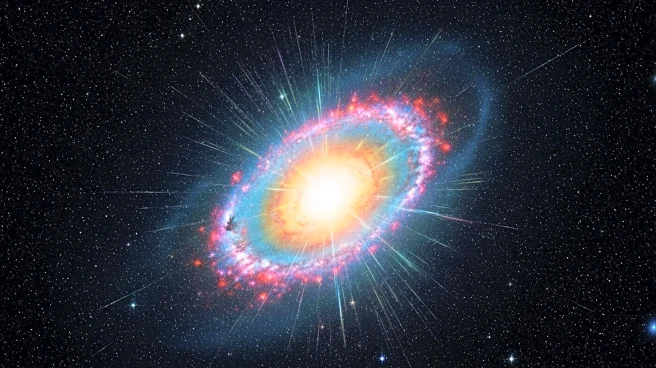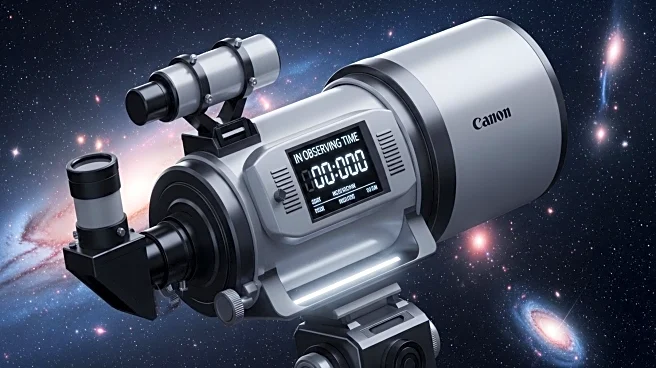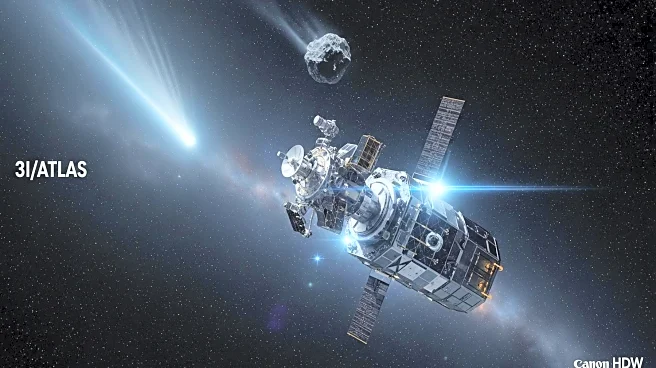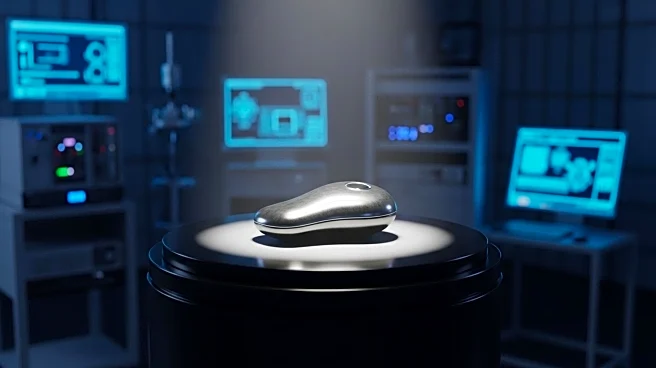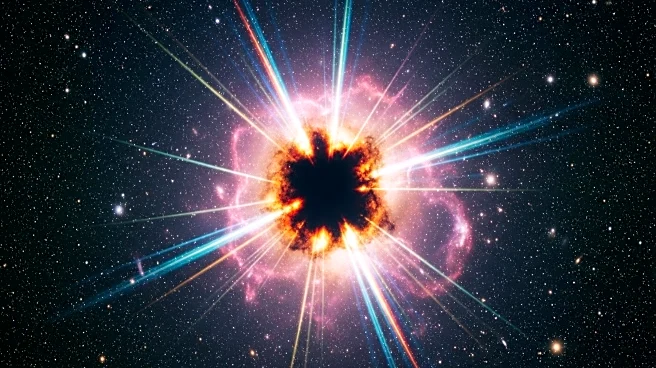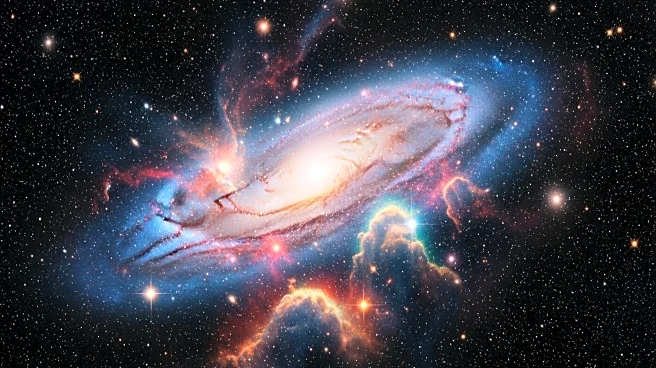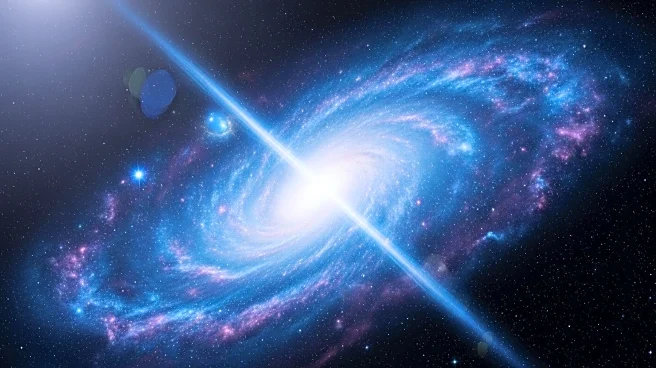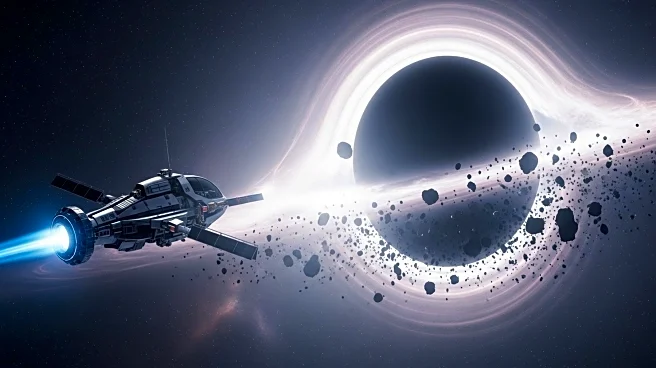What is the story about?
What's Happening?
NASA's Hubble Space Telescope has uncovered a rare ultra-massive white dwarf star, WD 0525+526, resulting from a merger between two stars. This discovery was made through Hubble's ultraviolet observations, which revealed carbon in the star's atmosphere, indicating a violent origin. The star, located 128 light-years away, is 20% more massive than the Sun and has a temperature of nearly 21,000 kelvins. This finding suggests that such cosmic collisions may be more common than previously thought, challenging existing theories about white dwarf formation.
Why It's Important?
The discovery of WD 0525+526 provides new insights into the formation of white dwarfs and the potential prevalence of stellar mergers. This could impact our understanding of stellar evolution and the pathways to supernova explosions. The ability to detect carbon in the atmosphere of white dwarfs through ultraviolet spectroscopy opens up new possibilities for identifying other merger remnants, potentially altering the classification of seemingly 'normal' white dwarfs. This research contributes to the broader field of astrophysics by enhancing knowledge of star lifecycle and cosmic phenomena.
What's Next?
Astronomers plan to extend their research to explore how common carbon white dwarfs are among similar stars and investigate the frequency of stellar mergers. This could lead to a reevaluation of the white dwarf family and provide further insights into binary star systems and supernova mechanisms. The ongoing use of Hubble's Cosmic Origins Spectrograph will be crucial in identifying more merger products and understanding their characteristics.
AI Generated Content
Do you find this article useful?
